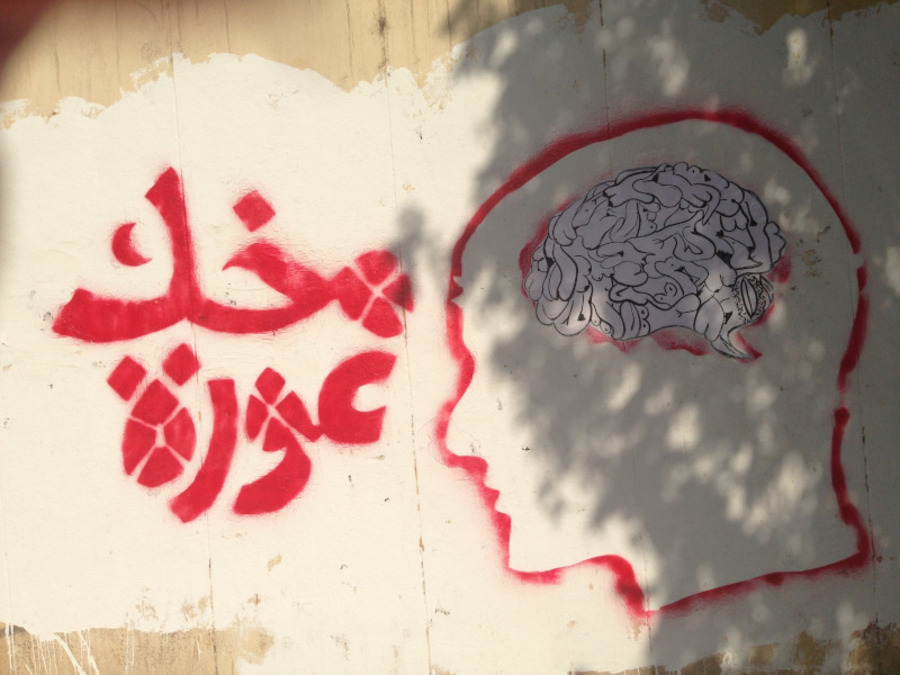Conferences and debates
Index / Activities / Conferences and debates / The streets speak Arabic
The streets speak Arabic
December 18, 20206:00 p.m.
ONLINE
Casa Árabe’s YouTube channel.
6:00 p.m.
In colloquial Arabic, with Spanish subtitles.
As part of World Arabic Language Day, which is celebrated every year on December 18, Casa Árabe is offering at its Youtube channel an online talk about the role of urban art and calligraphy in Arabic.
The Arab Springs in late 2010 promoted Arabic writing in urban spaces and launched this form of contemporary expression onto the international scene. Artists, graffiti painters and typographers from the Middle East and around the world now blend Arabic writing and calligraphy styles with graffiti, street art and urban culture. Within this new generation, there are many different, divergent and sometimes contradictory ideas and approaches. It is undoubtedly a contemporary form of expression that demonstrates the dynamic energy held by the Arabic language and the concerns of its youths. Casa Árabe has invited Bahia Shehab, a renowned example of this artistic movement, to take part in a dialogue in colloquial Arabic.
The Arabic language is a pillar of the cultural diversity of humanity. It is one of the most widely spoken languages in the world, used daily by more than 290 million people. Every year on December 18, World Arabic Language Day is celebrated since 2012. This date coincides with the day in 1973 when the United Nations General Assembly adopted Arabic as the organization’s sixth official language.
Bahia Shehab is the founder of the Graphic Design program at the American University in Cairo, where she has developed a comprehensive design curriculum focusing primarily on the visual culture of the Arab world. She is also a professor of Design Practice at the same university and has taught over fourteen courses on the subject. She frequently lectures internationally on Arab visual culture and design, design education and curriculum development, Islamic cultural heritage and artistic practice. Her artwork has been displayed at exhibitions, in galleries and on streets internationally, and she has received several international awards and acknowledgments. The documentary film Nefertiti’s Daughters presented her street art during the Egyptian uprising of 2015. Her publications include “A Thousand Times NO: The Visual History of Lam-Alif.” She is the first Arab woman to receive the UNESCO-Sharjah Prize for Arab Culture.
The Arabic language is a pillar of the cultural diversity of humanity. It is one of the most widely spoken languages in the world, used daily by more than 290 million people. Every year on December 18, World Arabic Language Day is celebrated since 2012. This date coincides with the day in 1973 when the United Nations General Assembly adopted Arabic as the organization’s sixth official language.
Bahia Shehab is the founder of the Graphic Design program at the American University in Cairo, where she has developed a comprehensive design curriculum focusing primarily on the visual culture of the Arab world. She is also a professor of Design Practice at the same university and has taught over fourteen courses on the subject. She frequently lectures internationally on Arab visual culture and design, design education and curriculum development, Islamic cultural heritage and artistic practice. Her artwork has been displayed at exhibitions, in galleries and on streets internationally, and she has received several international awards and acknowledgments. The documentary film Nefertiti’s Daughters presented her street art during the Egyptian uprising of 2015. Her publications include “A Thousand Times NO: The Visual History of Lam-Alif.” She is the first Arab woman to receive the UNESCO-Sharjah Prize for Arab Culture.

